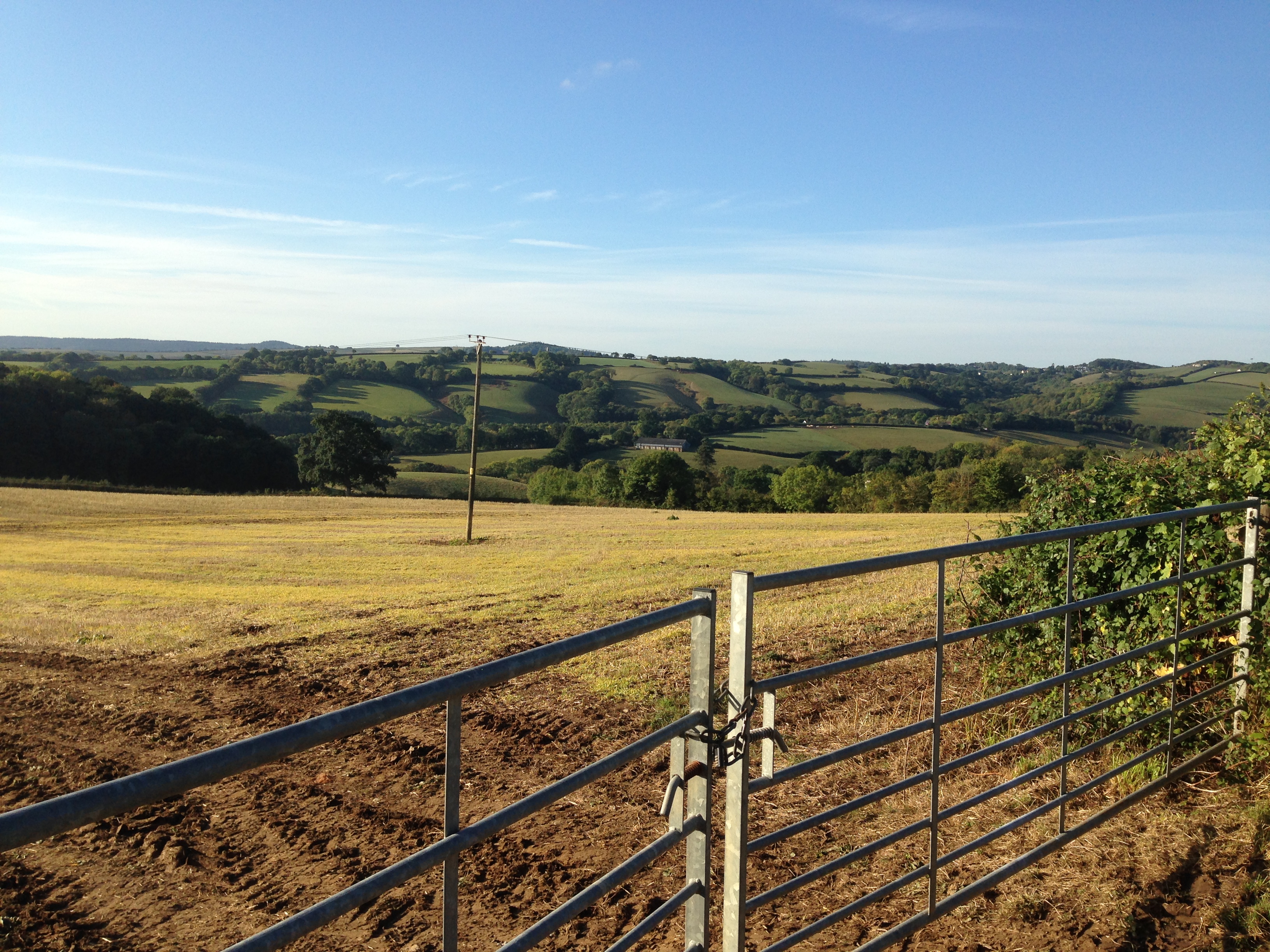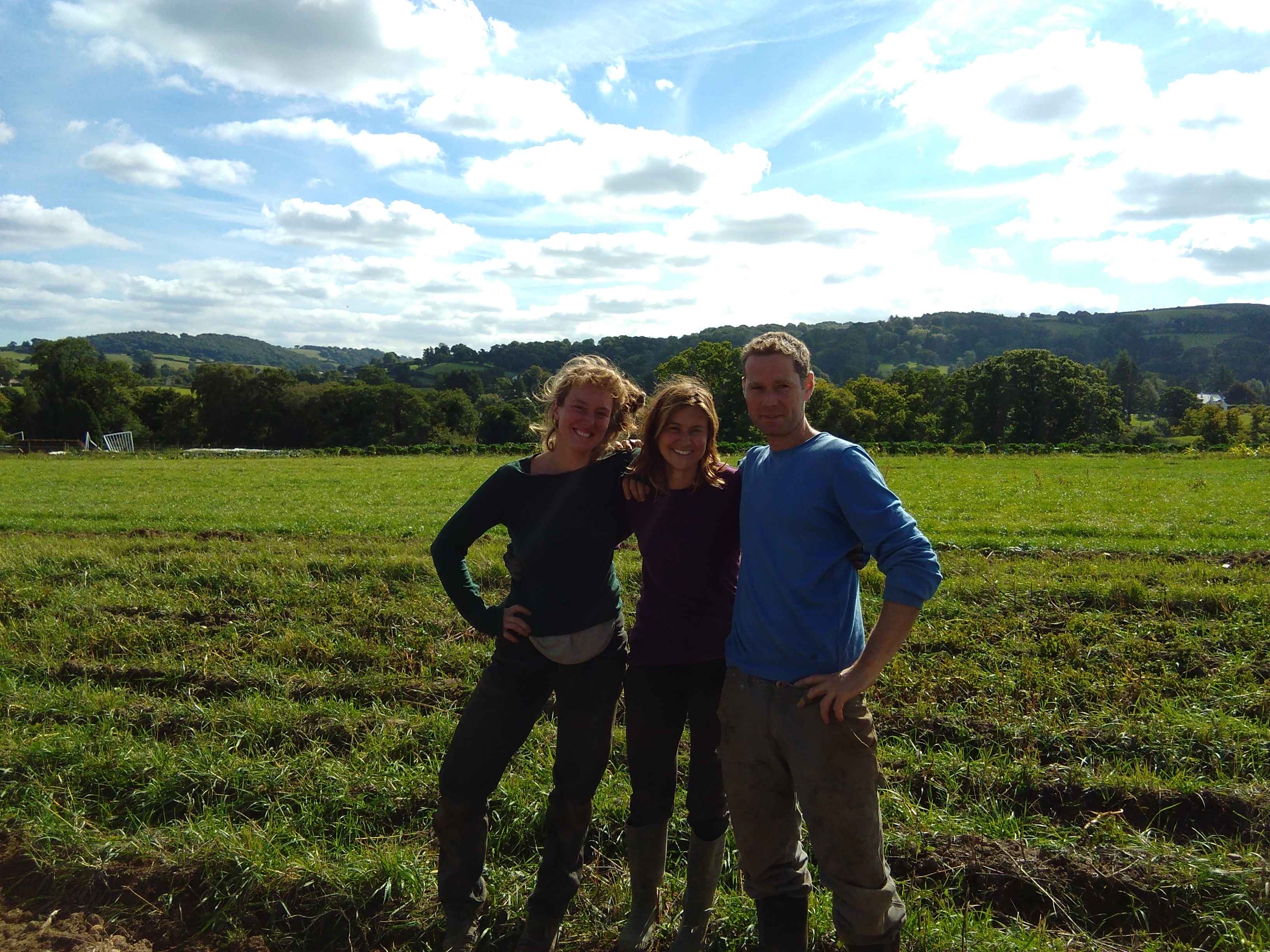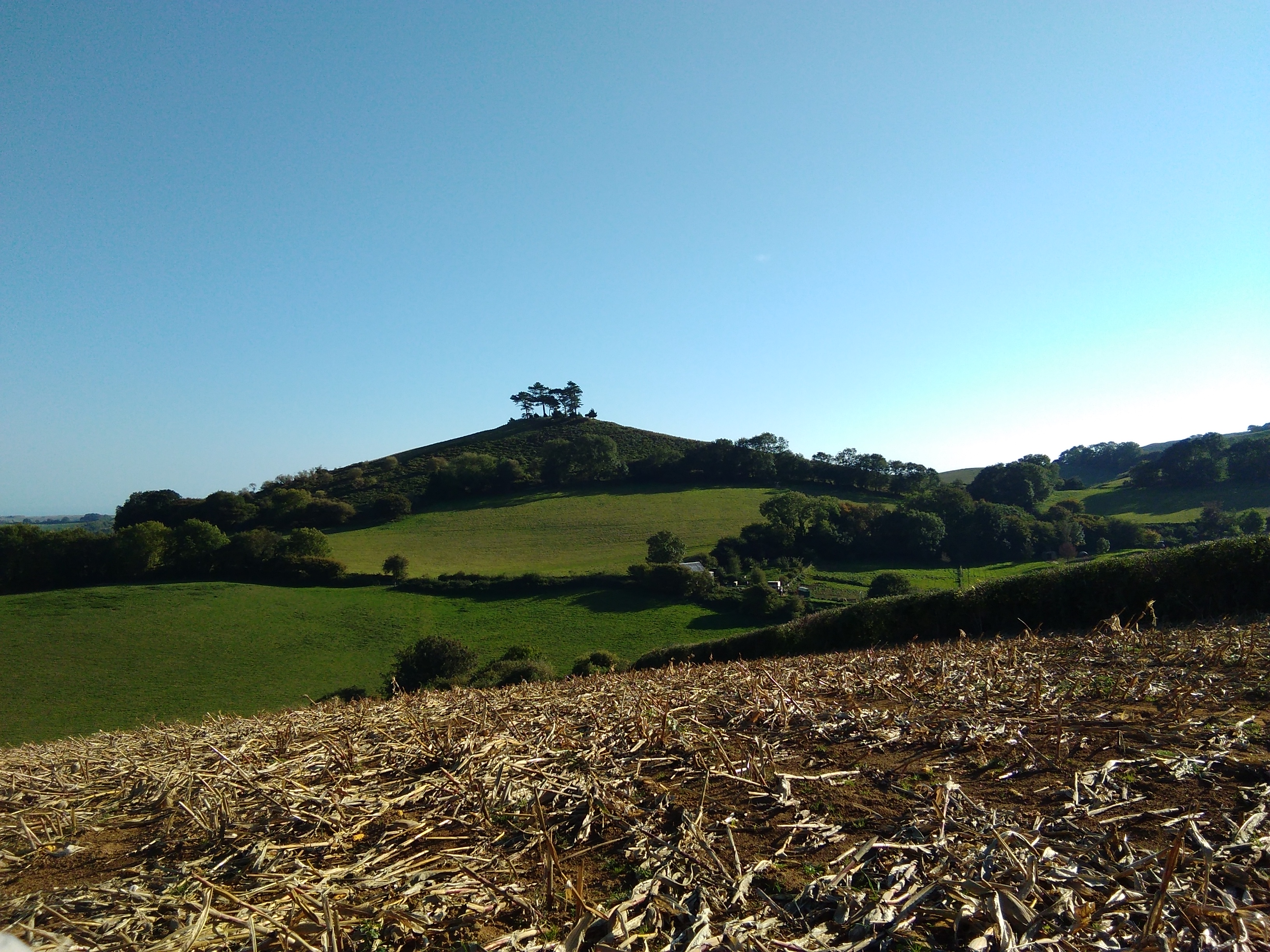As I take a moment to breath, punished but not beaten by Devon’s perennial hills, I realise I’m on a road that separates two farms that are worlds apart. To my left I see a small diverse community farm which supplies the local community with fruit and vegetables, to my right I see a large plot which supplies commodity cereals – mostly barley, wheat and maize. Cycling around Devon and Dorset as part of the RSA Food, Farming and Countryside Commissions UK tour, I explore what drives these differences and meet those farmers and landowners responding to changing conditions on both sides of the road.

From consumer to supporter, from global to local
It’s a sunny autumn morning in Chagford, a small market town near Exeter, where I meet Ed and his team at Chagfarm. “One of the key challenges for farmers is managing risk” Ed tells me – the weather and yields change each year, but the costs and prices stay the same. Chagfood have adopted an innovative model to overcome this, in which the producers and consumers share the risks associated with farming – known as Community Supported Agriculture (CSA). As a local family, you commit to buy your fruit and veg from your local CSA for a whole year. It’s a big shift for most people, from consumer at your local supermarket to supporter of your local farmer. But many locals have taken the plunge, drawn by the appeal of greater traceability and freshness of the food on their dinner plate.
Chagfarm now supply over 110 local families and employ 2.5 FTE staff on only 5 acres, growing a rich diversity of produce while they’re at it, from the usual suspects to melons and basil in their polytunnels. Ed tells me more than anything he’d love more support for capital investments, so they could be more efficient at storing food all year round and add value to their produce - “Local coops could do a lot in this regard, we could pool shared canning facilities and soup makers locally, so we can utilise the veg that will otherwise be going on the compost heap.”

Protecting our produce, going direct and diversified
At the larger end of the spectrum, George a large commercial tenant farmer near Cadbury has managed risk by diversifying their crops and running two dairy herds. Rather than rely on imports, exporting our food needs around the world, George thought it was better to “protect this country’s production and offer a reasonable price for produce”. He told me that under the current plans to scale down subsidy it would make his farm “more susceptible to shifts in global food prices”.
It’s not just established farmers who are looking to capture more of the value of what they do. Tristian, a new entrant with a small holding tells me of his desire to sell directly to consumers, “it’s nice to have control of what I’m selling and not having to change at the whim of a tariff”. It can be difficult for farmers to distinguish their products and reach local customers, he’d like to see more support for marketing to help smaller farmers gain more value from their produce – “I’d like to collaborate with local farmers to build a strong regional brand for our beef and lamb”.
Toying with transition
From Devon I dipped into the Dorset countryside, stopping over at Symondsbury estate where they estimate that they are currently growing enough calories to feed 50,000 families. Traditionally the estate had solely focused on farming, but twenty years ago they took the decision to diversify the business to ensure its sustainability – and the estate now features a whole host of different enterprises from hairdressers to bikeshops, a café and a wedding business. By integrating their retail and food businesses, going forward, they think they will capture more of the value of what they produce as well as responding to customer demands for clearer providence and fresh local alternatives.
Transitioning 1500 acres to a different farming system quickly feels like a huge risk, one which they are tentatively exploring in the fog of competing advice and against their recent practice and current market incentives. Symondsbury’s head farmer told me about the stories he’d heard from local farms who had attempted the switch to organic and doubted whether they could “make the numbers work” in the current market. Similarly, Tristian told me about how he thought the organic market peaked a few years ago “you no longer get the same premium for organic and there’s no market for organic lamb”. Sustainable land management requires sustainable business models to underpin it.

Searching for value
Many of the farmers and growers I met were turning their gaze toward local markets in search of lower risk and higher margins. This represents a huge shift in the skills required to succeed in farming. To be successful in this context farmers now must be marketing managers, logistics experts and agronomists. It seems there are huge opportunities to build collaborations between producers to share the equipment, staff overheads, logistical costs and infrastructure or even work under a common local brand. The will is there, but the barriers remain. Low food prices and high capital costs make this scale of organisation of our food system challenging.
While changing farming practice has many perceived risks for those reliant on farming income, the desire to capture more value from what they produce and the costs of not acting are starting to tip the scale for many in Devon in Dorset. Transitioning to new models has implications that go far beyond the economic. These models are community focused, creating more opportunities for people to come together, whether it be through attempts to create more vibrant communities on large estates or CSA harvest parties. They also tend to be more responsive to local ecosystems and the health dimensions of our food, working with local landscapes and markets to meet the needs of communities rather than the prices offered for commodity crops used in mass produced food. Despite the challenges, these ideas are taking seed in small farmers and large land owners alike.
This blog is part of a series for the RSA Food, Farming and Countryside Commissions UK Tour. It’s impossible to do justice to all the stories and voices of the people we met in a short blog – see all the places we went to on our interactive map.

Be the first to write a comment
Comments
Please login to post a comment or reply
Don't have an account? Click here to register.